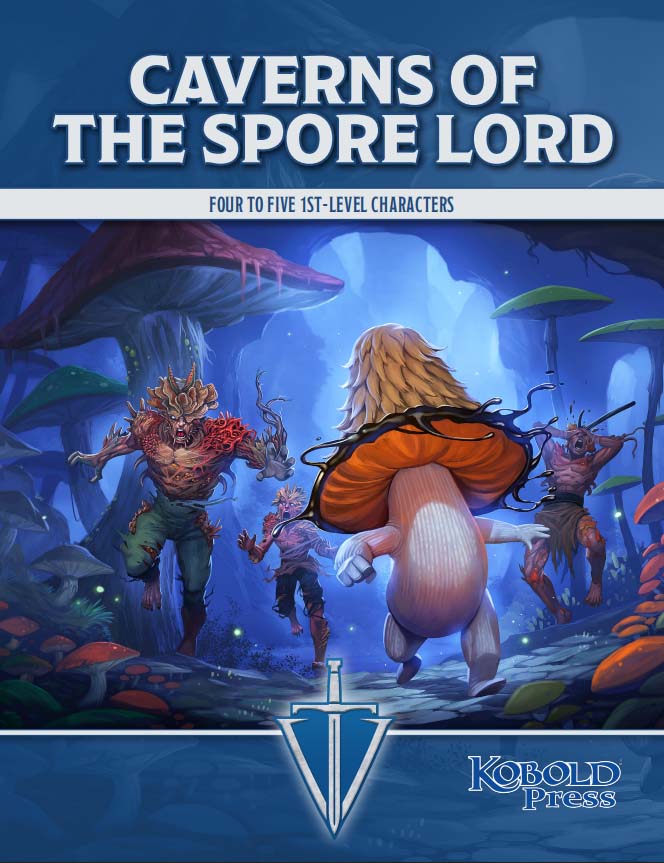In an earlier column, I looked at ways to keep a road trip interesting. That article was about a standard walk in the sun. A different type of journey with problems and possibilities all its own occurs underground.
Any fantasy world worthy of the label is practically hollowed out by a network of caverns, tunnels, and subterranean grottoes that would make terrestrial cavers wet themselves. Regardless of what it’s called—Underdark, Khyber, Svartalfheim, or just “the underworld”—a journey through that landscape must be a different sort of undertaking from walking or riding between Riverdale and Midvale. Players should never be able to forget that their characters are moving through a dark, alien landscape.
That means the DM must be armed with events and encounters uniquely suited to an underground journey—like the following.
Fellow travelers. The player characters aren’t the only surface dwellers with business below ground. Anyone met down there should have an interesting story to tell. They might be on their way back to the surface after a successful plundering raid, or retreating in shame after having their clocks cleaned by the locals; lost and wandering through the catacombs in search of a landmark or any friendly face with a map or a good sense of direction; hunted by subterranean natives for food or sport; or members of an expedition who were marooned here by their companions for some offense, real or imagined. (Expect justice in the dark realm to be unbending and harsh for those who break a group’s rules of survival.)
Barrier. Geological barriers are to be expected in caverns. Narrow spaces, cave-ins, extreme vertical shifts, and swift-moving water are dangerous obstacles, but not all barriers need to be natural. Tunnels might be barricaded or collapsed on purpose by subterranean denizens to fence away enemies or fierce monsters. You don’t want to be stuck on the wrong side of a wall that’s keeping the purple worms out of the fungus farms.
Cache. A trip into the underworld needs to be well supplied. Occasionally a group is burdened with more than it can carry (usually because of lost manpower, not a sudden abundance of resources). The wise thing to do in those situations is cache the excess in a place where you can find it again when you need the supplies but that won’t be noticed by every troglodyte slinking down the tunnel. Despite someone’s best efforts at concealment, the characters find a secret stash of who-knows-what. Maybe the original owners are being digested by a black pudding—or maybe they’re on their way back right now, counting on finding their precious belongings where they left them, not bulking up the PCs’ backpacks.
Corpses. The underworld is a dangerous place where lifeless bodies accumulate for any number of reasons. These might be the losers of a battle, victims of disease or poison, the unappetizing contents of some creature’s larder, or the leftovers from last week’s feeding frenzy.
Travelers from below. The denizens of the underworld aren’t all stick-at-home types. They have just as many reasons to travel as surface dwellers have. They might take to the tunnels in hunting and foraging parties, merchant caravans, exploratory missions, raids against the surface or against other underworld dwellers, or as diplomatic emissaries to their neighbors above, below, or sideways. Any of these offer unique roleplaying and conflict possibilities to a group of astute adventurers.
Crypts. Just about everyone dies eventually, and when they do, most of them get buried underground. Subterranean societies can inter their fallen deep down. Intruders slinking through unknown tunnels are bound to stumble into a duergar or troglodyte burial ground sooner or later. When they do, they might learn more about those creatures’ funeral rites than they care to know.
Ruins. Cities and civilizations rise and fall below ground just as they do above. A city might be abandoned because its resources were depleted, its enemies overran the defenses, or it was foolishly built too close to a fault line, lava tube, or purple worm hatchery. It might even be a colony from the surface, mysteriously wiped out like some underground Roanoke. Unlike on the surface, an empty subterranean city isn’t exposed to the destructive effects of weather. Barring a natural calamity, it could survive for centuries largely intact to be taken over by brutish creatures that clearly could never have built it.
Paradise. Hollow world stories are rife with tales of civilizations that achieved heights of refinement and accomplishment outstripping anything on the surface. With technology or magic (take your pick), this advanced race created an artificial sun, made the barren caverns bloom like gardens, refined their art and philosophy to the point where everything spoken, written, or created by the most learned surface scholars seems like the work of children, and in the process became stagnant, sterile, and stuporous. Add paranoid to that list; characters might find this place lovely to visit but almost impossible to bid farewell.
The mundane made weird. Finally, almost anything encountered during a surface journey—bandits, armies on the march, forest fires, monsters, shady inns—can be encountered underground. The underworld version should not be a copy of its surface counterpart but rather a shadow or reflection. The world beneath the world is bizarre and alien, and a familiar encounter mutated into something peculiar by the surroundings is a great way to hammer that point home.

